What Is Content Operations? And Why It Breaks Without a Feedback & Approval System
03 May
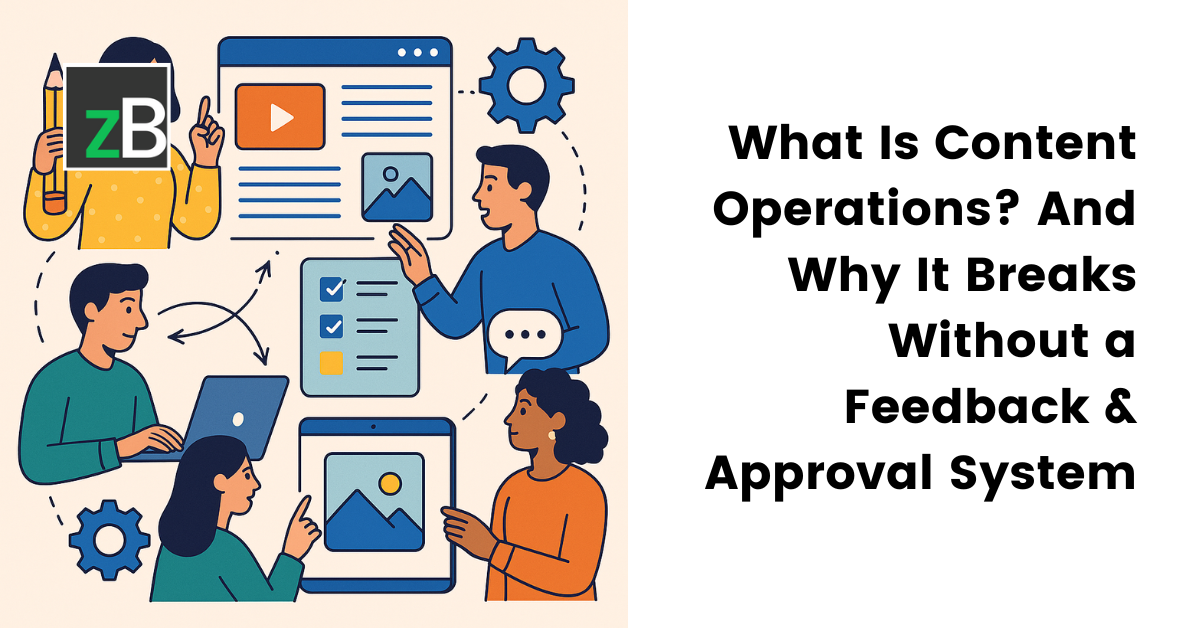
Table of Contents
ToggleContent Is No Longer Just Marketing’s Job
Content operations is the backbone of digital content delivery—spanning creation, approval, governance, and publishing across teams and formats.
Today, content isn’t confined to blogs and social posts anymore. It’s embedded in product interfaces, support documentation, onboarding flows, training materials, sales assets, and even legal communications. Content now touches nearly every team, not just marketing.
This shift has brought with it a growing web of contributors: content strategists, UX writers, developers, legal reviewers, product managers, and more. It has also introduced a tangle of formats, channels, and tools. What this means? Mmore complexity, more feedback loops, and often… more friction.
So how do you scale content production while keeping it consistent, collaborative, and aligned?
That’s where content operations comes in.
More than just a role, content operations is the function that brings order to the chaos by aligning three core pillars: people, processes, and tools.
At its best, a streamlined content operations platform acts as the connective tissue between cross-functional teams, helping everyone move faster, stay aligned, and deliver high-quality content at scale.
But when content review and approvals live in email threads, spreadsheets, or Slack messages, even the most well-planned content efforts can fall apart, leading to delays, rework, and inconsistent messaging.
This article breaks down what content operations really means today, why it often breaks down, and how the right feedback and approval system can be the missing link between strategy and execution.
Content operations is the function that aligns people, processes, and technology to streamline content planning, creation, review, and delivery at scale.
- Content operations manages how content is created, reviewed, approved, and delivered across teams and channels.
- It brings together the right people, repeatable processes, and supporting tools to scale content efficiently.
- As content becomes more cross-functional—and AI accelerates production—teams face more complexity and feedback loops.
- Without a structured review and approval system, content ops can become chaotic and delay go-to-market timelines
- Tools like zipBoard act as the missing layer to unify content feedback, streamline collaboration, and maintain quality at scale.
| Component | Examples | Tools / zipBoard's Role |
|---|---|---|
| People | Content strategists, UX writers, legal reviewers, product managers | zipBoard helps align cross-functional teams through centralized feedback and approvals |
| Process | Drafting, reviewing, approving, publishing | zipBoard structures workflows with task assignments, version control, and audit trails |
| Technology | CMS, DAM, review tools, project trackers | zipBoard integrates with tools like Jira, supports all file types, and fills the gap in visual content reviews |
What Is Content Operations?
Content operations (Content ops) is the discipline that brings together the people, processes, and technology required to create, manage, and scale content effectively across an organization.
Here’s how Cathy McKnight at CMI puts it:
Content operations are the big-picture view of everything content-related within your organization, from strategy to creation, governance to effectiveness measurement, and ideation to content management.
At its core, content ops ensures that digital content—whether it’s a blog post, a product microcopy, a training video, or a knowledge base article—is developed through repeatable workflows, with clear ownership and aligned goals.
When content operations is done right, organizations can reduce friction, improve collaboration, and ensure compliance, without sacrificing speed or quality.
In short, content operations is how leading teams build systems that power consistent, high-performing content at scale.
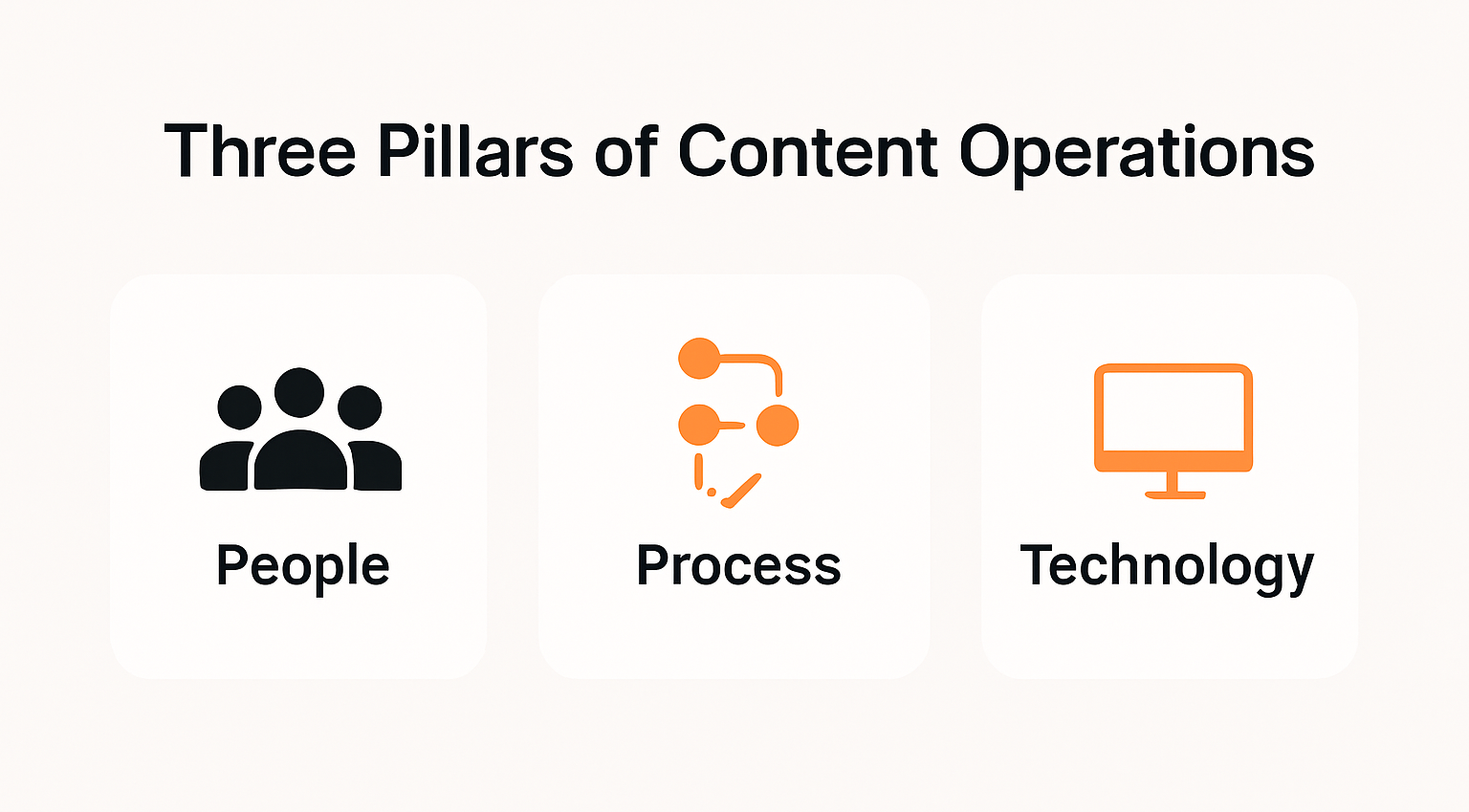
Why Content Ops Is Essential Today
Content is no longer limited to blog posts and brochures. It now spans product interfaces, onboarding emails, customer support articles, social media, and more. So managing this growing complexity across channels, formats, and teams has made content operations a necessity.
The Challenge of Omnichannel Content
Whether it’s a knowledge base article, a UI tooltip, or a tweet, every piece of content represents your brand. But each channel has different requirements, stakeholders, and timelines. And without a centralized approach, teams risk duplication, delays, and inconsistency.
This is where streamlined content operations step in—ensuring all content, regardless of where it lives or who owns it, follows a unified strategy, voice, and workflow.
More Stakeholders, More Complexity
Modern content creation involves a cross-functional content team:
- Content strategists and writers craft the message
- Product managers define priorities
- Legal and compliance teams ensure accuracy
- SEO specialists optimize for discoverability
- Designers and developers shape the final experience
The more people involved, the harder it becomes to manage collaboration without friction, unless there’s a system in place.
Fast Execution, Without Sacrificing Quality
The need to publish fast, especially in agile environments, often means content QA gets skipped. This leads to errors, inconsistent tone, or misaligned messaging across platforms.
Marketing content operations teams must balance speed with precision. That’s only possible when workflows are structured, stakeholders are aligned, and review processes are standardized.
💡 Content ops isn’t just about keeping things moving. It’s about keeping them moving in the right direction, with the right people, and at the right time.
Where Content Operations Breaks Down (And Why)
Even with talented teams, structured workflows, and a suite of tools, content operations often unravel at the last mile—the stage where collaboration, feedback, and final approvals converge. This is where friction builds up and progress stalls.
Let’s look at why this happens:
Content review is scattered across tools
Feedback often lives in Slack threads, email chains, Google Docs, spreadsheets, and the occasional Zoom comment. With input coming from every direction, it’s easy for crucial suggestions to be missed, resulting in rework, delays, or even public-facing errors.
There’s no audit trail or accountability
When feedback is fragmented, it becomes unclear who said what, and whether it was ever addressed. This lack of visibility is especially risky during legal or compliance reviews, where every decision needs to be documented and traceable.
Version control becomes a mess
Without a central source of truth, teams end up working on multiple “final” versions stored in different drives or email attachments. This version confusion doesn’t just waste time, it can lead to publishing outdated or incorrect content, damaging trust and credibility.
QA and review processes are inconsistent or skipped
Without a unified system, quality assurance checks either vary across teams or get skipped entirely in the rush to publish. This inconsistency shows up in the final product, hurting both user experience and brand cohesion.
Deadlines slip due to unclear responsibilities
When it’s not obvious who’s responsible for the next step, progress stalls. Missed handoffs and vague ownership can derail even the most well-planned launches.
Stakeholders are looped in too late
Often, critical stakeholders—like product leads, legal, or executives—only see content once it’s already live. At that point, revisions are costly, timelines are disrupted, and risks increase.
💡 Without a centralized system for feedback and approvals, content operations collapse under their own weight.
How zipBoard Solves This
zipBoard brings all stakeholders onto a single content review and operations platform where content can be reviewed, annotated, tracked, and approved. From first draft to final sign-off, every comment, version, and status lives in one place.
Struggling with scattered feedback and endless email threads?
Try zipBoard’s centralized review system to bring clarity and accountability to your content workflows
Book DemoStart Free TrialThe Three Pillars of Effective Content Operations
Successful digital content operations rest on a solid foundation built from three core pillars: People, Process, and Technology. When aligned, these pillars create a scalable system that drives clarity, quality, and speed across the content lifecycle.
1. People: Cross-Functional Roles
At the heart of every content operation is a cross-functional team. These are not just writers or editors, but a diverse group that includes:
- Content creators and strategists
- Product managers and UX writers
- Legal and compliance reviewers
- Localization teams
- SEO and marketing specialists
As teams become increasingly distributed and remote, collaboration becomes more complex. And that’s where a content operations manager plays a critical role—facilitating communication, reducing bottlenecks, and ensuring everyone is aligned on goals and timelines.
2. Process: Governance, Feedback, Approval
Without clear workflows, content becomes chaotic. Effective content ops rely on documented workflows that guide every piece from ideation to publication. A typical content workflow might look like:
Draft → Review → Approve → Publish → Archive
Alongside this flow, content governance frameworks define the rules: tone of voice, accessibility standards, legal requirements, and more. These ensure consistency and compliance at scale.
Content governance is the framework and processes your company uses to manage its content and determine how you create, publish, and maintain it. It defines priorities, provides guidelines, and assigns ownership to people within an organization to execute your company’s content strategy. - HubSpot
Most importantly, a structured feedback and approval process prevents last-minute edits, ensures stakeholder input is timely, and reduces launch delays.
3. Technology: Tools and Infrastructure
A well-orchestrated content operation needs the right content operations software stack, which often includes:
- Content Management Systems (CMS): to store, manage, and publish content
- Examples: WordPress, Contentful, Webflow
- Digital Asset Management (DAM): to organize and retrieve visual and media assets
- Examples: Bynder, Adobe Experience Manager, Cloudinary
- Project/Task Trackers: for planning, status updates, and team collaboration
- Examples: Trello, Asana, ClickUp, Jira
- Content Review & Approval Tools: to centralize feedback, streamline approvals, and maintain version control
The missing link in many stacks? A real-time, version-aware content operations platform that allows stakeholders to leave contextual feedback, track revisions, and align on approvals—all without miscommunication or fragmented workflows.
💡 Bringing these three pillars together enables organizations to create a scalable, efficient, and resilient content ops function. One that supports growth while maintaining quality.
Why Feedback & Approval Systems Are the Backbone of Scalable Content Ops
Behind every high-functioning content operation is a strong foundation—not just of strategy, but of execution. And nothing connects those two more critically than a feedback and approval system. Here’s why:
It Eliminates Review Delays
Without a clear review and approval path, tasks linger in limbo. A strong system ensures every stakeholder knows when to give input, where to do it, and what needs to happen next, keeping projects moving.
It Prevents Misalignment
Cross-functional teams (product, marketing, legal, UX) often bring different priorities to the table. A centralized system brings visibility and traceability, ensuring everyone is working from the same page—literally and figuratively.
It Closes Compliance Gaps
Whether it’s legal disclaimers, accessibility standards, or brand voice, compliance isn’t optional. Feedback and approval tools create an audit trail, enforce checkpoints, and reduce the risk of costly oversights.
It Reduces Cross-Team Friction
Email ping-pong and vague feedback often result in frustration and blame. A good system provides clear context, role-based permissions, and structured workflows—so collaboration becomes smoother, not messier.
Feedback & Approval: The Key to Content Execution
Without a centralized, purpose-built system, even the most ambitious content strategy will fall apart during execution.
Feedback and approval processes manage accountability, accelerate timelines, and scale content production with clarity, consistency, and control.
💡 zipBoard is built around this very principle. It holds your entire content operation together.
Need a feedback and approval process that actually works?
zipBoard gives your team a scalable system built for collaboration, not chaos. See zipBoard in action
Book DemoStart Free TrialHow zipBoard Solves the Feedback & Approval Gap in Content Ops
Even with the right people, tools, and documented processes, content operations often break down at one critical point: feedback and approvals. Emails get buried, comments are spread across files and platforms, and final sign-off becomes a guessing game.
That’s where zipBoard comes in—as the missing collaboration layer that connects your entire content ops ecosystem.
Where zipBoard Fits in Your Content Operations Stack
zipBoard acts as the connective tissue between content creation and publishing; bridging the gap between writers, designers, subject matter experts, legal teams, product managers, and clients. It’s built for the realities of modern content workflows, where feedback comes from multiple stakeholders, across tools, and often outside of your CMS.
Here’s how zipBoard streamlines content collaboration:
Timely feedback from SME helps makes the learning content relevant for the learners, and makes it easy for Learning team to execute their projects faster.
Non-profit
Visual feedback on real content experiences
Review websites, PDFs, videos, and SCORM packages directly in context with zipBoard’s markup tools. Stakeholders can annotate live previews or staging links. This removes the need for screenshots, messy email chains, or juggling multiple tools, ensuring that feedback is precise, visual, and actionable.
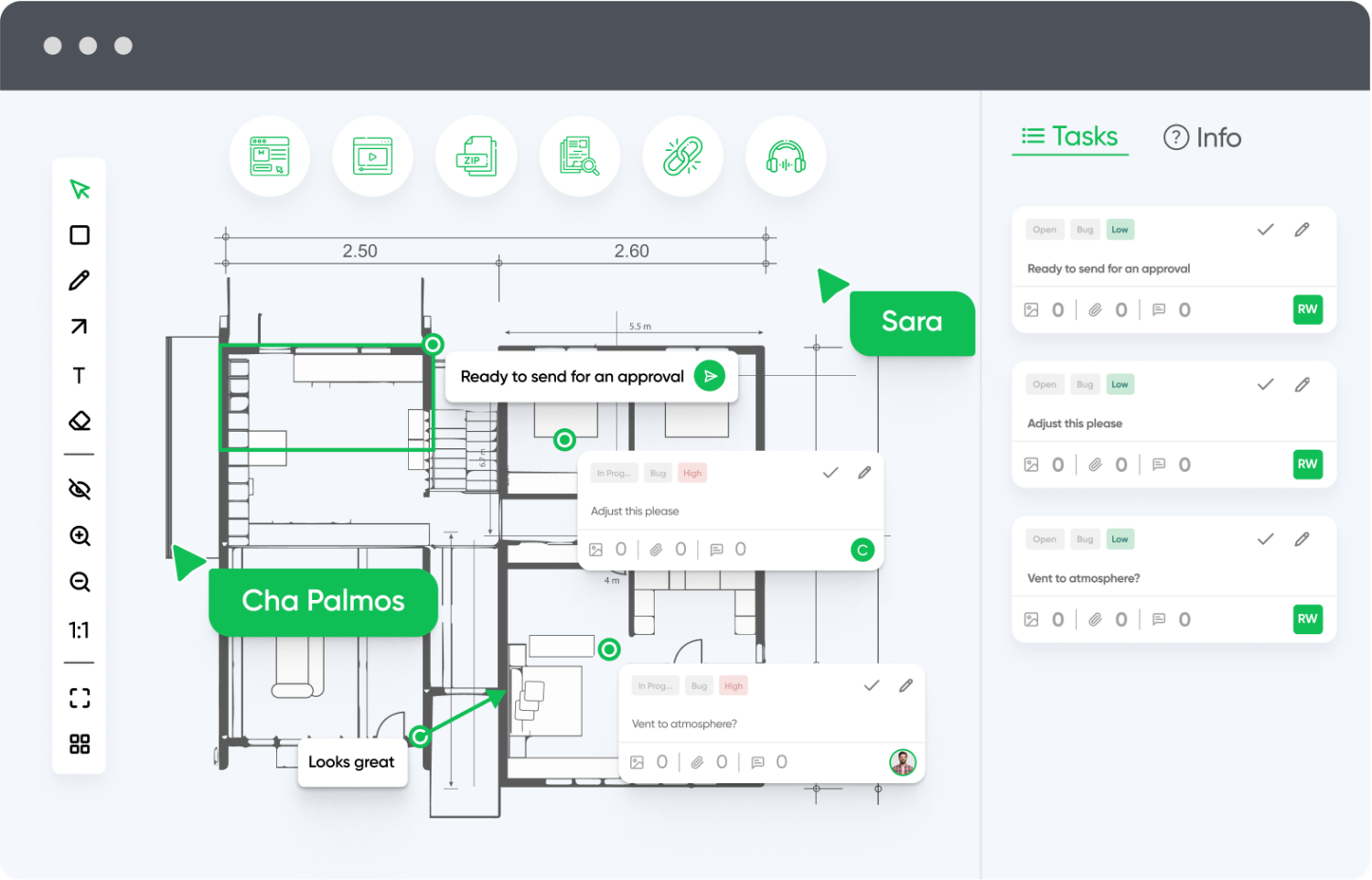
Role-based workflows and customizable templates
Structure your review process with clearly defined roles, approval stages, and pre-configured templates. Whether you’re drafting a knowledge base article or a product help doc, zipBoard ensures every piece follows the right path—from creation to final sign-off.
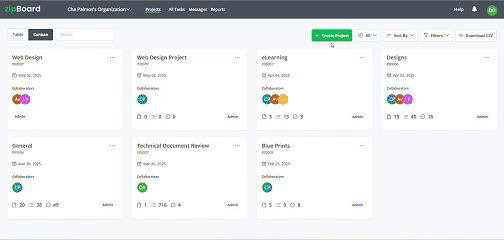
Centralized comments and task-based annotations
Say goodbye to scattered feedback in emails, Google Docs, or Slack threads. All comments and annotations are tied to the specific content item and version—so everyone stays aligned and accountable.
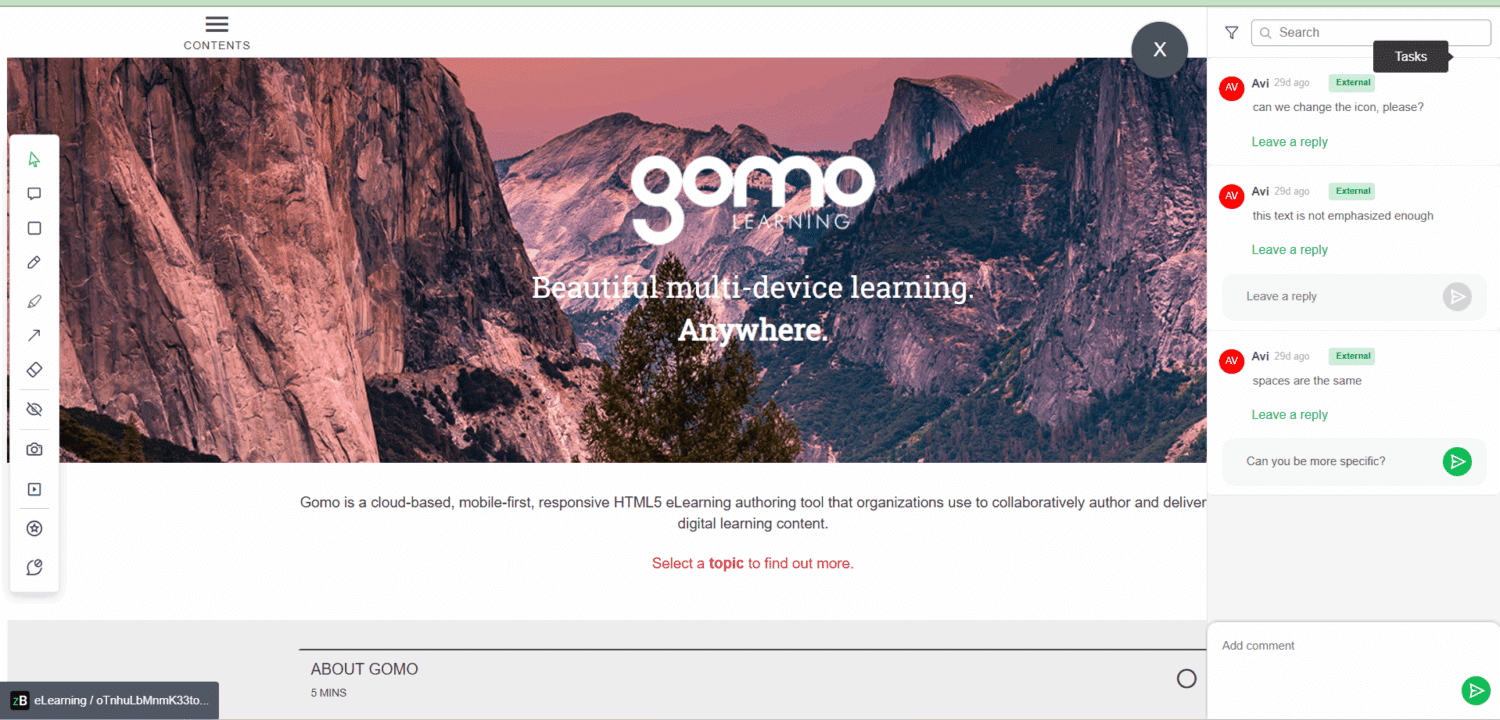
Version control, audit trail, and activity tracking
Track every change, comment, and action. zipBoard logs the full history of each asset, so you always know what was changed, who reviewed it, and what feedback has been resolved.
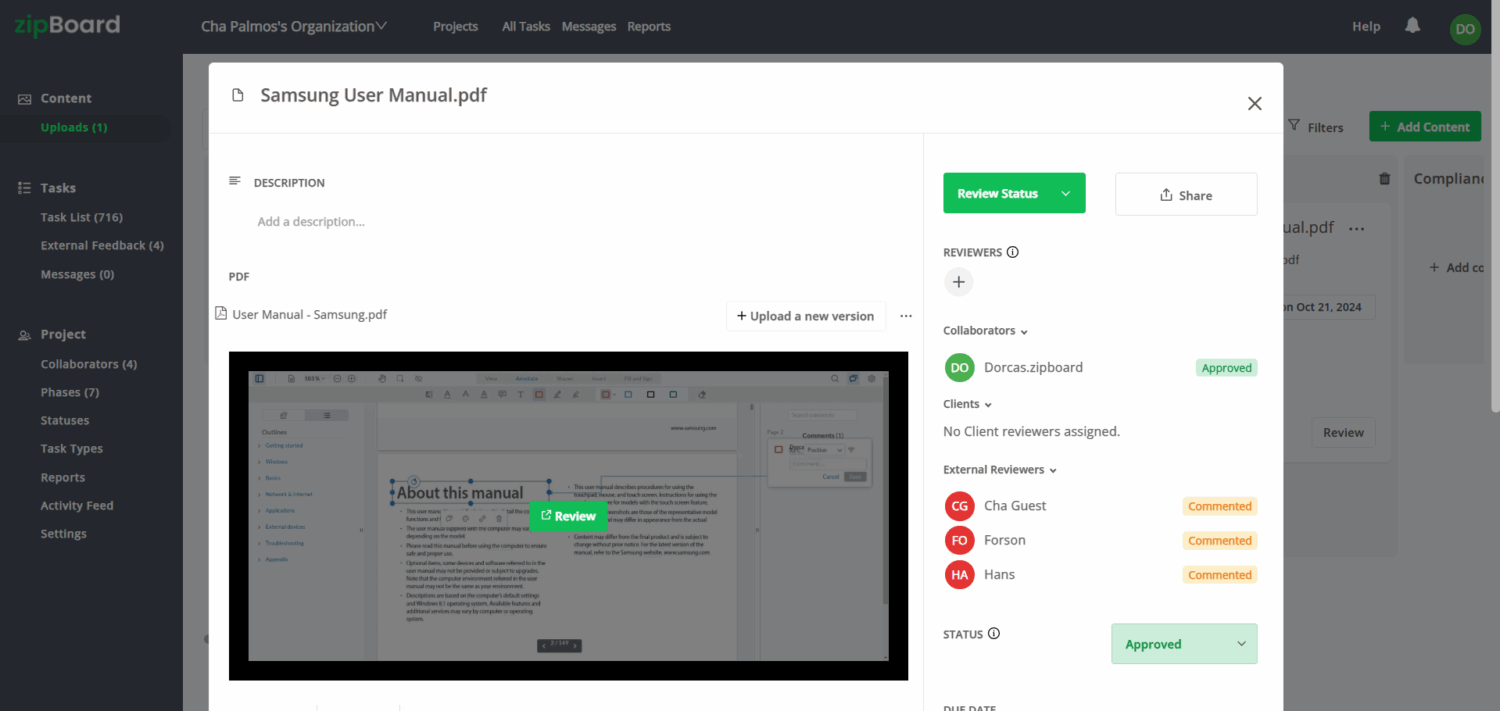
Tags, status updates, and stakeholder-specific views
Prioritize what matters to each role with smart filtering. Whether you’re a content manager, legal reviewer, or UX writer, zipBoard lets you sort by content type, status, or reviewer—helping you focus only on what needs your input.
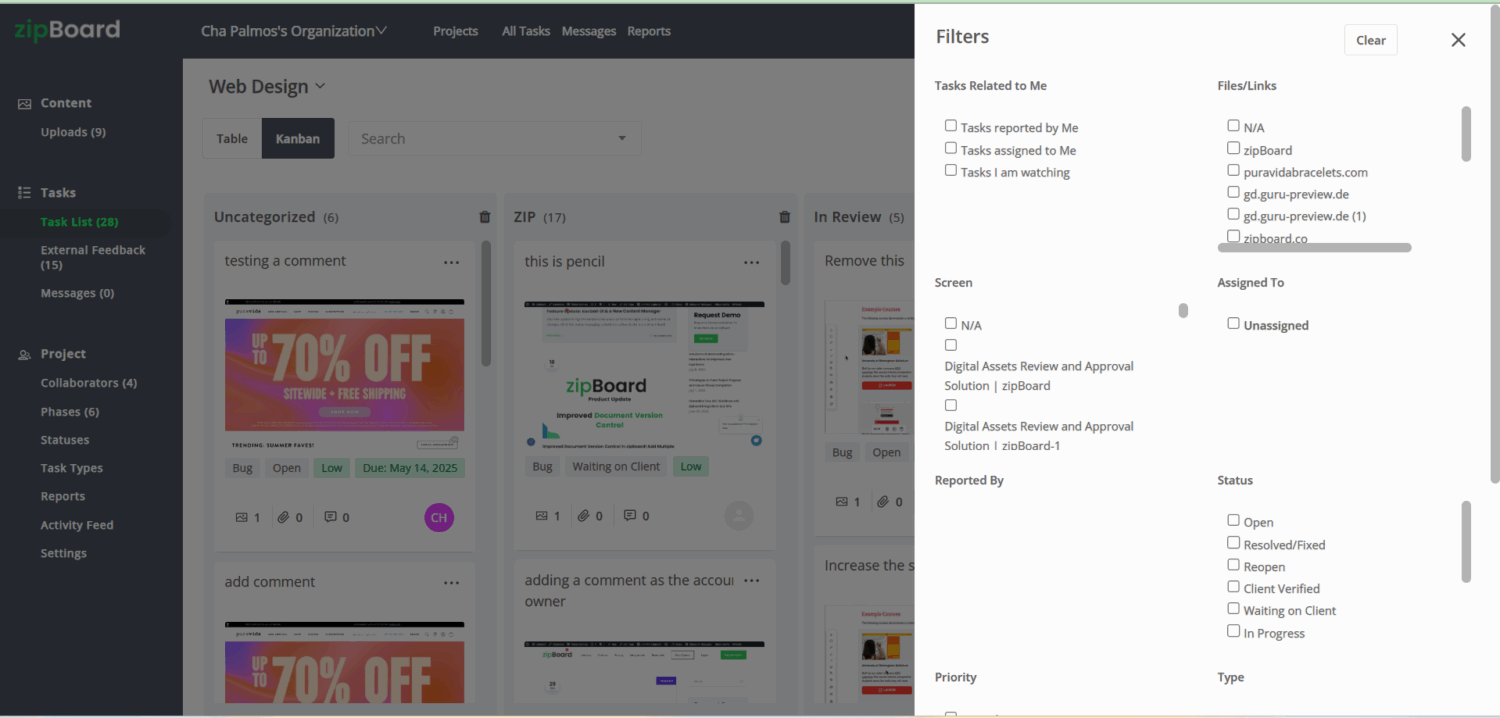
Works Without CMS Integration
zipBoard lets teams review staging links, previews, and live URLs—without needing backend access. This makes it perfect for:
- WordPress and Webflow previews
- LMS course reviews
- Help docs, microsites, and product UIs
💡zipBoard doesn’t need CMS integration to deliver a seamless, in-context review experience—making it flexible for any content format or platform.
Ready to Streamline Your Content Reviews?
No more missed comments, version confusion, or approval delays. zipBoard makes content review easy for creators and stakeholders—without needing CMS access. Start reviewing smarter with a free trial.
Book DemoStart Free TrialBonus: Connecting Content Ops to Dev or Product Workflows with Jira
As content operations expand across various teams, integrating content feedback with other workflows becomes crucial, especially when aligning content teams with development, product, and engineering departments.
This is where zipBoard’s integration with Jira (and similar tools) proves invaluable. By bridging the gap between content operations and development workflows, zipBoard helps maintain alignment, keeps communication seamless, and reduces friction across departments.
Here’s how zipBoard enhances the connection between content feedback and DevOps/ProductOps workflows:
- Feedback becomes Jira tickets: When feedback or revisions are provided in zipBoard, they can be automatically converted into Jira tickets. This ensures that developers, product managers, and engineers are directly informed about necessary changes.
- Maintains alignment between writers, designers, and developers: No more back-and-forth between content teams and technical teams. zipBoard ensures everyone stays on the same page, whether you’re working on product UI copy, microcopy, or API documentation.
- Keeps non-technical stakeholders out of technical tools: Product, legal, and other non-technical stakeholders can stay in their preferred tools (like zipBoard) while technical teams can continue working in Jira, ensuring smooth and streamlined communication.
- Automatic status updates: As content or development progresses, the status updates are synced between zipBoard and Jira, ensuring that all stakeholders are on the same page about where the work stands.
- Reviewers don’t need to enter Jira: Content reviewers can provide feedback in zipBoard without needing to enter the Jira environment, maintaining simplicity and ease of use.
With this synergy, zipBoard makes the entire workflow more collaborative and transparent, ensuring that content development aligns with product and development schedules.
Modernizing Content Operations with AI and Automation
The rise of generative AI is transforming how content teams operate. Tools like ChatGPT, Jasper, and Copy.ai are enabling marketers, documentation teams, and support teams to generate blogs, product descriptions, help articles, and emails in a fraction of the time it once took.
For growing teams or lean operations, this means faster output, fewer bottlenecks, and lower production costs.
But with that increased volume comes a new challenge: more content means more reviews. The speed of AI-generated content still demands a layer of human oversight, particularly when it comes to accuracy, brand tone, compliance, and user relevance. In short, AI accelerates creation, but doesn’t eliminate the need for quality assurance.
This is where the second wave of content operations tools comes in—those that manage structured review workflows, facilitate cross-functional collaboration, and help content teams maintain quality as they scale.
Platforms like:
- AI-powered CMSs (e.g., Storyblok, Sanity) for smarter content structuring
- Workflow automation tools (e.g., Zapier, Make, or Airtable Automations) for routing tasks
- Feedback and review platforms like zipBoard, which provide structure to review and approval cycles
With zipBoard, for example, content teams can scale their review process alongside their creation process. Here’s how:
- Smart Auto-Tagging: zipBoard uses AI to automatically tag files and tasks based on content type or context, helping teams sort and filter feedback at scale without manual labeling.
- Review Progress Tracking: AI auto-assigns status updates to tasks based on stakeholder actions (e.g., viewed, reviewed, approved).
- Automated Reporting: Generate real-time insights on review progress and team activity.
- AI Review Assistant (Coming Soon): Automatically detects grammar, spelling, and punctuation issues in website content before human reviewers step in. Errors are pinpointed on the actual asset, with suggestions and explanations. Each issue can be instantly converted into a task for faster fixes.
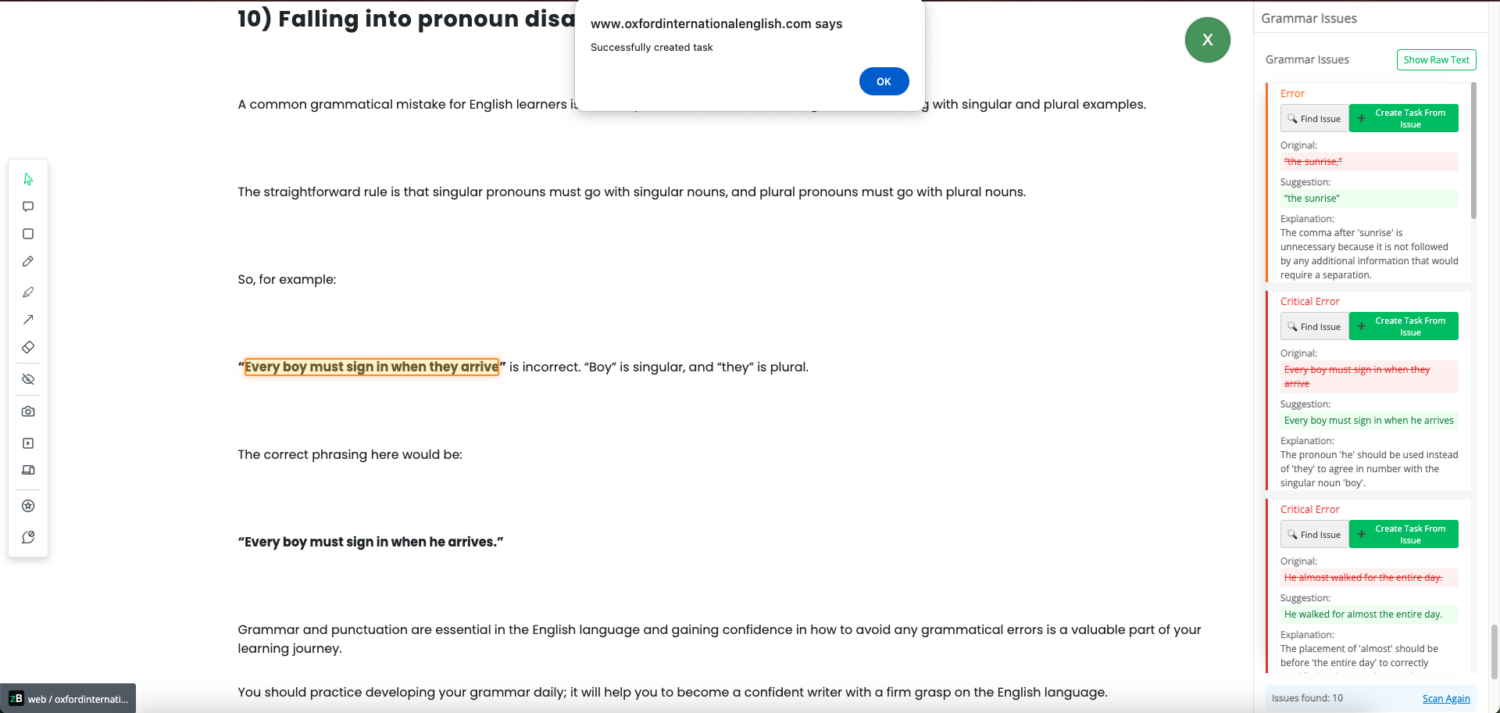
By blending AI speed with structured human review, zipBoard ensures you don’t just scale content—you scale it responsibly.
Templates to Jumpstart Scalable Content Ops
Implementing scalable content operations can feel overwhelming, especially for teams that are just starting to refine their workflows. The good news is, you don’t have to build everything from the ground up.
zipBoard offers pre-configured templates that make it easy to kickstart your content operations, ensuring consistency and efficiency across all content types.
One of the most popular templates is the Content Development Template, which helps you manage the entire content lifecycle—from drafting to publishing. This template is designed with the following key features:
- Pre-configured phases: Research & Discovery → Draft Development → Technical Validation → Editing & Refinement → Stakeholder Review → Final Production
- Task types: White Paper → API Documentation → Release Notes → Technical Manual → Knowledge Base →Troubleshooting Guide
- Statuses: Planning → Draft → Peer Review → Technical Review → Editing Phase → Published
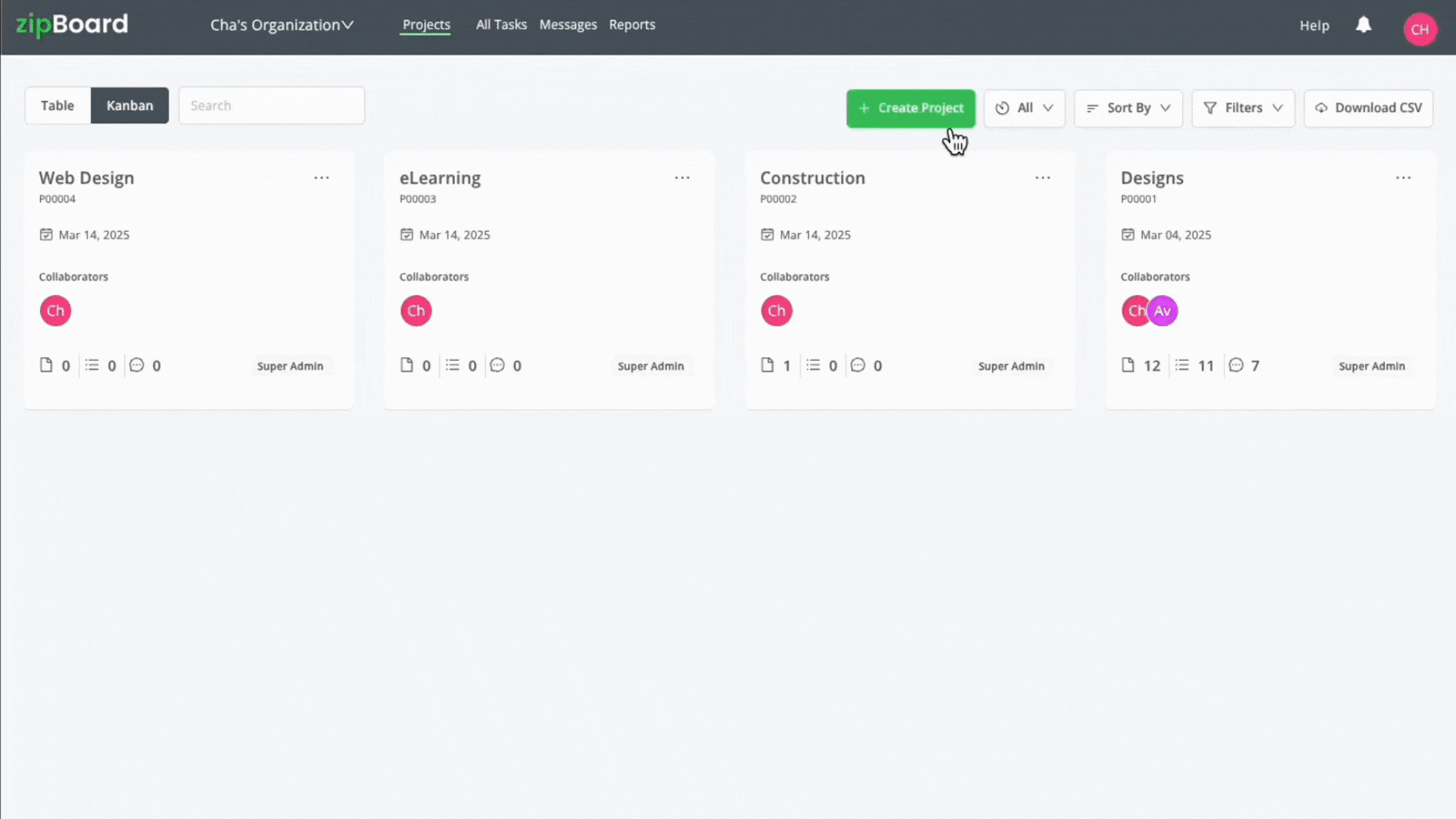
These elements are already set up in the template, so your content operations managers or marketing leads can hit the ground running without spending time creating workflows from scratch.
Using these templates not only saves time but also sets your team up for long-term success with structured, repeatable workflows that scale as your content operations grow.
💡 On the enterprise plan, you can fully customize these templates—adjusting phases, task types, statuses, and roles to match your unique internal processes.
Don’t start from scratch
Use our Content Development Template to roll out repeatable content workflows in zipBoard.
Try the template NowFinal Thoughts: Build a System, Not Just a Stack
Having the right tools—CMS, DAM, content calendar—isn’t enough if feedback and approvals are scattered. You need a system that brings everything and everyone together.
zipBoard fills that gap by adding a structured review layer to your content workflow. It streamlines collaboration, speeds up approvals, and ensures nothing falls through the cracks.
Build a system, not just a stack.
zipBoard helps content ops teams go from chaos to clarity with structured reviews, approvals, and collaboration.ution for you.
Book DemoStart Free TrialFAQs
Content operations manage the workflows and tools to produce and distribute content efficiently, while content strategy defines the goals, audience, and messaging.
Without structure, feedback gets lost, reviews are delayed, and content quality suffers, making the entire process inefficient.
Content creators, designers, strategists, legal, SMEs, and product teams all play key roles in reviewing and approving content.
You’ll need tools for content creation, asset management, collaboration, feedback, and analytics to keep operations running smoothly.
zipBoard centralizes feedback, tracks versions, and streamlines approvals with visual collaboration and structured workflows.
Yes, zipBoard works independently—no integration needed to review websites, documents, or other digital assets.
zipBoard logs every change, comment, and action across versions, ensuring full visibility and accountability.
Yes, zipBoard integrates with Jira and more, so feedback becomes actionable without switching tools.
It provides structured review workflows to ensure AI-generated content meets quality and brand standards.
Absolutely—zipBoard’s intuitive interface makes it easy for anyone to give feedback, even without technical knowledge.
Ready to Streamline Your Content Operations?
Start your free trial of zipBoard. Or book a demo to see how it fits into your content workflow
Book DemoStart Free TrialRecent Posts
- MEP Document Management: How to Streamline Reviews & Avoid Rework October 3, 2025
- What Is Online Proofing Software? And Why Content Review Breaks Without It July 11, 2025
- How Laerdal Medical Cut eLearning Review Time by 50% with zipBoard’s Visual Review Tool July 9, 2025
- Why Your Team Needs a Content Feedback System (Not Just Comments in Docs) May 28, 2025
- Content Approvals Are Slowing You Down — Here’s the Fix May 26, 2025
©️ Copyright 2023 zipBoard Tech. All rights reserved.

